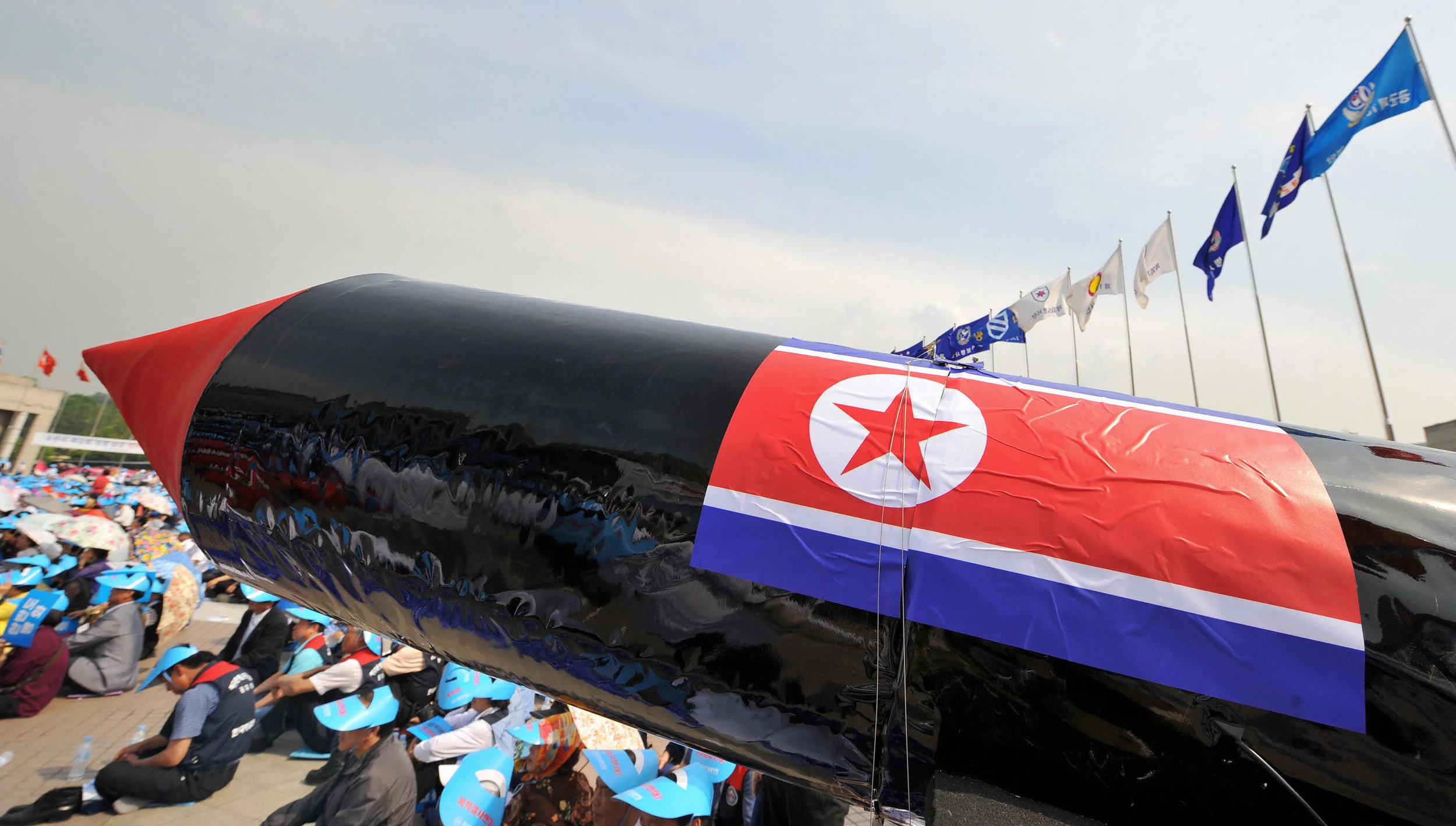Trump and Kim's Bad Deal
A mock North Korean missile on display at an anti-nuclear testing rally in South Korea in 2009 (Image)
At the historic US-DPRK summit in June, President Trump and Kim Jong-un met face-to-face and signed a document promising to work towards ”complete denuclearization of the Korean Peninsula.” The president was so confident in his deal-making skills that he believed he could break through a long history of failed nuclear deals with North Korea. He thought he’d broker a better arrangement than the 1994 Agreed Framework, the 2000 US-DPRK Joint Communique, or any of the agreements resulting from the six rounds of Six Party Talks in the early 2000s.
Spoiler alert: Trump’s efforts have, so far, been no different than these previous attempts.
Since the signing of the statement in Singapore this summer, little progress has been made to actually denuclearize the peninsula. There have been non-nuclear concessions on both sides: the US canceled joint military exercises with South Korea, which North Korea has historically denounced, and the latter government released three American prisoners prior to the summit. Both sides have also agreed to hold a summit between the two leaders after the US Secretary of State, Mike Pompeo, met with Kim Jong-un in September. But North Korea’s nuclear program is still going strong, despite previously destroying its nuclear test site at Punggye-ri.
On November 12th, Beyond Parallel at the Center for Strategic and International Studies published a detailed report of some of North Korea’s underground nuclear facilities, as examined through satellite imagery. The report found that North Korean has anywhere from 13 to 20 unreported underground missile operating bases. And according to North Korea’s state-run news agency, Kim oversaw testing of a new ultra high-tech weapon on November 16th. It is clear that North Korea is frustrated by the lack of progress on easing tough international sanctions enacted in light of its nuclear development. The country is returning to taking a harder stance against the US, even if that means developing non-nuclear missiles. By continuing operations of underground nuclear facilities while simultaneously progressing its arsenal of other types of weapons, North Korea is sending a reminder to President Trump and the rest of the American government that the state can easily revert to belligerent diplomacy. The existence of these underground nuclear sites call into question whether Kim genuinely intended to engage in denuclearization in the first place.
This deal that President Trump worked out with Kim Jong-un appears to be just another washed-out attempt in a long history of failed nuclear pacts with North Korea. For someone who prides himself on being a master deal-maker, Trump, it seems, has little to show for his supposed business acumen.

